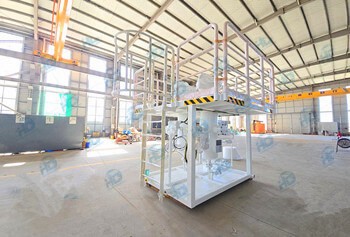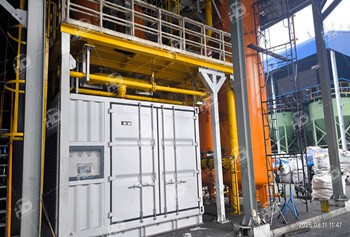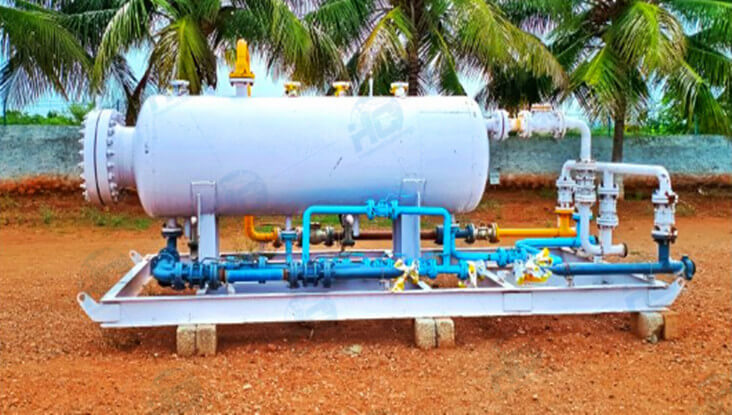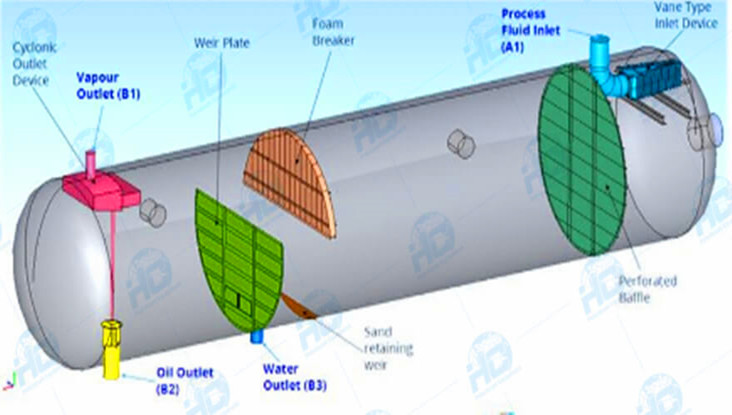In oil and gas applications, oil-water separators play a crucial role in separating and managing produced fluids. However, operators sometimes face challenges with water levels rising above intended levels, impacting separation efficiency and potentially leading to equipment malfunctions. In this article, HC will explore solutions for high water levels in oil-water separators and outline key design principles to ensure efficient, long-term operation.
Troubleshooting High Water Levels
When a client reports high water levels in an oil-water separator, several factors need investigation. Here’s a structured approach to help resolve the issue:
Inspect the Drain Valve
Excessive water levels can result from clogged or malfunctioning drain valves. Inspecting and clearing any obstructions in the valve or replacing faulty components can often restore normal water levels.
Verify Water Level Control Settings
Oil-water separators often incorporate level control sensors and automatic drains. Maladjustments in these controls or sensor malfunctions may lead to inaccurate water levels. A thorough check and recalibration or replacement of sensors can improve accuracy.
Examine the Pump System
If the separator utilizes a pump to manage water discharge, check that the pump is functioning properly and is adequately sized for the application. A malfunctioning or undersized pump may hinder water evacuation.
Regularly Clean Internal Components
Oil-water separators can accumulate sediments and particles that clog pathways, reducing the effectiveness of water discharge. Periodic cleaning of the separator’s internal parts helps maintain effective flow paths and supports better separation.
Adjust Inflow Rate if Necessary
Excessive inflow of liquids beyond the separator’s designed handling capacity can result in higher water levels. Adjusting the inflow rate to match the separator’s capability allows the system to operate within its optimal range.
Increase Monitoring Frequency
For facilities experiencing frequent water level issues, increasing monitoring intervals provides an opportunity to catch and address rising levels early.
Key Design Considerations for Oil-Water Separators
Effective oil-water separator design minimizes operational issues and ensures reliable separation over time. Here are several core considerations for engineers during the design process:
Capacity and Flow Rate
Determining the separator’s processing capacity based on anticipated inflow volumes is critical. Oversized or undersized equipment can lead to inefficiency or frequent issues with water and oil levels.
Material Compatibility
The separator must be constructed from materials compatible with the fluids being processed, especially when handling corrosive or abrasive elements. Stainless steel or other corrosion-resistant materials are commonly selected for harsh environments.
Efficient Phase Separation
The design should leverage gravity and the density differences between oil and water to enhance separation efficiency. Internals, such as coalescing plates or baffles, should be strategically placed to reduce turbulence and maximize phase separation.
Automated Control Systems
Incorporating sensors for water and oil levels, as well as automated drain systems, facilitates real-time monitoring and reduces manual intervention. These controls are critical for maintaining operational consistency and preventing issues like water overflow.
Maintenance Accessibility
For long-term performance, separators should be designed for easy maintenance access. Components likely to require frequent service, such as drain valves, sensors, and internal coalescing elements, should be accessible without extensive disassembly.
Environmental and Safety Compliance
Compliance with environmental and safety regulations is essential, particularly regarding water discharge standards. Designing separators to meet local and international guidelines ensures regulatory alignment and minimizes environmental risks.
Adaptability to Variable Conditions
In certain applications, the characteristics of the fluids being separated may vary significantly. Designing the separator with adaptability to fluctuating flow rates or fluid compositions can prevent frequent maintenance needs and enhance operational resilience.
When addressing high water levels in an oil-water separator, both corrective actions and preventative measures are essential for restoring and maintaining effective performance. From checking drain valves to recalibrating sensors, troubleshooting steps target common issues that can arise. At the design stage, careful consideration of capacity, materials, separation efficiency, control systems, and compliance requirements can significantly reduce the likelihood of issues over the separator’s operational life.
Ensuring robust oil-water separator design not only optimizes performance but also reduces the need for frequent maintenance, delivering long-term value to operators and improving overall facility efficiency.
-
2025 / 11 / 01
 HC Successfully Delivers Gas-Liquid-Sand Separator for Xinjiang Oilfield Project
HC Successfully Delivers Gas-Liquid-Sand Separator for Xinjiang Oilfield Project -
2025 / 08 / 20
 HC Successfully Delivered Filter Coalescer Skid to Malaysia
HC Successfully Delivered Filter Coalescer Skid to Malaysia -
2025 / 08 / 12
 Thailand Sulfur Removal Unit Commissioned for Natural Gas Processing Plant
Thailand Sulfur Removal Unit Commissioned for Natural Gas Processing Plant
- +86 158 6190 3617










